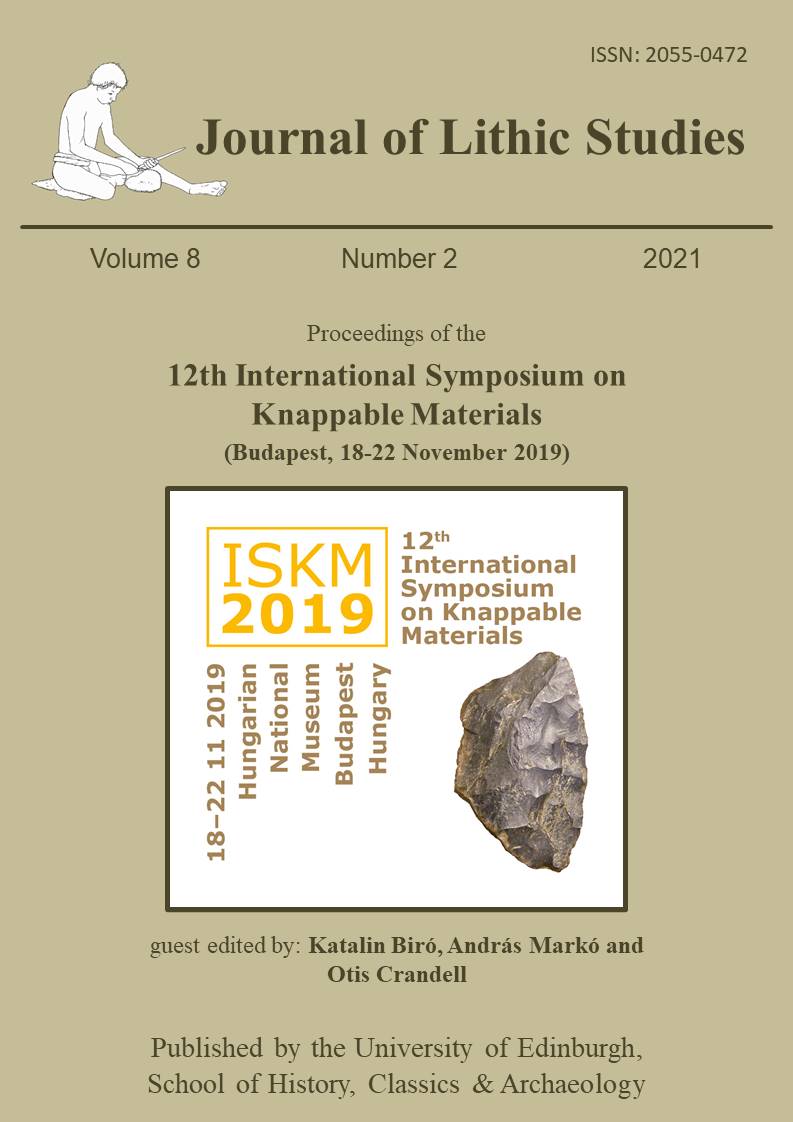Manufacturing technology of stone miniature columns from the Bronze Age site Gonur Depe (southern Turkmenistan)
Abstract
Archaeological cultures of the Bronze Age, despite the widespread use of metal, also used stone raw materials for the manufacture of tools, household, and sacred items. A lot of stone products had a complicated shape and meticulous finishing, but the technology of their manufacture is still not always clear. This fully applies to the materials of the Bronze Age of southern Turkmenistan where long-term settlements of the proto-urban type are being studied. These include Gonur Depe (2500-1500 BCE) - the administrative and religious centre of ancient Margiana (Sarianidi 2005). Among its materials are stone miniature columns of “unknown” purpose in the shape of a chess rook, which are usually found in sacral complexes. This paper deals with the technology of producing these objects (half of the collection of intact items was investigated) and is part of a collective work on a comprehensive study of large stone cult objects from Gonur Depe. The raw materials for studied miniature columns were gypsum, limestone, marbled limestone, marbled onyx, onyx, talcochlorite, and polymictic breccia. For the first time the authors made an attempt to consider the issues of miniature columns manufacturing technology. Thanks to the use-wear study of their surfaces, it became possible to reveal numerous technological traces invisible to the naked eye. The data obtained made it possible to characterize all stages of the miniature columns manufacturing technology, which indicates a high level of development of the stone-processing industry in the settlements of the Bronze Age of Turkmenistan.
References
Alekshin, V.A. 1979, Могила знатного горожанина на Алтын-Депе. Успехи среднеазиатской археологии (Successes of Central Asian archeology), 4(8): 81-82. (in Russian) (“The grave of a noble citizen in Altyn Depe”)
Amiet, P. 1986, L’âge des échanges inter-iraniens 3500-1700 avant J.-C. Éditions de la Réunion des musées nationaux, Paris, 332 p. (in French) (“The age of inter-Iranian exchanges 3500-1700 BC”)
Antonova, E.V. 2001, Реконструкция смысла археологической вещи. Поиски пути. In: Древние цивилизации Евразии история и культура Материалы Международной научной конференции, посвященной 75-летию действительного члена Академии наук Таджикистана, академика РАЕН, д.и.н., проф. Б.А. Литвинского (Москва, 14-16 октября 1998 г.) (Ancient Civilizations of Eurasia History and Culture Materials of International Scientific Conference, dedicated to the 75th anniversary of full member of the Academy of Sciences of Tajikistan, academician of the Russian Academy of Natural Sciences, Doctor of Historical Sciences, Professor B.A. Litvinsky (Moscow, October 14-16, 1998)) (Sedov, A.V., Ed.), Vostochnaya literatura, Moscow: p. 75-87. (in Russian) (“Reconstruction of the meaning of an archaeological thing. Finding a way”)
Boroffka, N. & Sava, E. 1998, Zu den steinernen «Zeptern/Stössel-Zeptern», «Miniatursäu-len» und «Phalli» der Bronzezeit Eurasiens. Archäologische Mitteilungen aus Iran und Turan, 30: 17-113. (in German) (“On the stone "sceptres/stem sceptres", "miniature columns" and "phalli" of the Bronze Age in Eurasia”)
Frankfor, A.P. 1997, Печати Окса: разнообразие форм и изменяемость функций. Вестник древней истории (Bulletin of Ancient History), 4: 60-68. (in Russian) (“Seals of Oks: variety of forms and variability of functions”)
Jarrige, J.-F. 1988, Le complexe culturel de Mehrgarh (Période VIII) et de Sibri. Le «Trésor» de Quetta. In: Les cités oubliées de l'Indus. Archéologie du Pakistan (catalogue de l’exposition du Musée National des Arts Asiatiques Guimet) (Jarrige, J.-F., Ed.). Association Française d'Action Artistique, Paris: p. 111-128. (in French) (“The cultural complex of Mehrgarh (Period VIII) and Sibri. The “Treasure” of Quetta”)
Korobkova, G.F. 2004, Хозяйственно-производственная деятельность населения Алтын-депе (по данным комплексного изучения каменных орудий). In: Орудия труда и системы жизнеобеспечения населения Евразии (Tools and life support systems of the population of Eurasia) (Korobkova, G.F., Ed.), Evropeiskii dom, St. Petersburg: p. 92-137. (in Russian) (“Economic and industrial activities of the population of Altyn Depe (according to a comprehensive study of stone tools)”)
Masson, V.M. 1981, Алтын-Депе. Nauka, Leningrad, 176 p. (in Russian) (“Altyn Depe”)
Pottier, M.H. 1984, Matériel funéraire de la Bactriane Méridionale de l'Âge du Bronze. Éditions Recherche sur les Civilisations, Paris, 232 p. (in French) (“Burial material from Southern Bactria from the Bronze Age”)
Sarianidi, V.I. 1990, Древности страны Маргуш. Ylym, Ashgabat, 316 p. (in Russian) (“Antiquities of the country of Margush”)
Sarianidi, V.I. 1992. Два уникальных флакона из Бактрии. Вестник древней истории (Journal of Ancient History), 3: 81-89. (in Russian) (“Two unique bottles from Bactria”)
Sarianidi, V. 2005, Gonur-Depe. City of Kings and Gods. Miras, Aşgabat, 324 p.
Sarianidi, V. 2008, Margush. Mystery and Truth of the Great Culture. Türkmendöwlethabarlary, Aşgabat, 341 p.
Schmidt, E.F. 1937, Excavations at Tepe Hissar, Damghan. Publications of the Iranian Section of the University AQ2 Museum, University Museum, University of Pennsylvania Press, Philadelphia, 478 p.
Skakun, N.N. 1972, Функциональное исследование каменных наконечников стрел эпохи бронзы. Каракумские древности (Karakum antiquities), 4: 161-166. (in Russian) (“A functional study of the stone arrowheads of the Bronze Age”)
Skakun, N.N. 1977, Каменные орудия эпохи бронзы (по материалам Алтын-депе 1970-1972 гг.). Каракумские древности (Karakum antiquities), 6: 98-101. (in Russian) (“Stone tools of the Bronze Age (based on materials from Altyn Depe 1970-1972)”)
Skakun, N.N. 2003, Flint arrowheads from the Bronze Age settlement of Altyn Depe. Southern Turkmenia: Form and uses. Paléorient, 29(1): 147-156. doi: 10.3406/paleo.2003.4759
Vinogradova, N.M. 2004, Юго-Западный Таджикистан в эпоху поздней бронзы. Institute of Oriental Studies of the Russian Academy Sciences, Nauka, Moscow, 298 p. (in Russian) (“Southwest Tajikistan in the Late Bronze Age”)
Zaitseva, G.I., Dubova, N.A., Sementsov, A.A., Reimer, P., Mallory & J. Jungner, H. 2008, Радиоуглеродная хронология памятника Гонур-депе. Труды Маргианской археологической экспедиции (Proceedings of the Margiana Archaeological Expedition) (Sarianidi, V.I., Ed.), 2. Staryy sad, Moscow: p. 166-179. (in Russian) (“Radiocarbon chronology of the Gonur Depe site”)

This work is licensed under a Creative Commons Attribution 4.0 International License.

This is an Open Access journal. All material is licensed under a Creative Commons Attribution 4.0 International (CC BY 4.0) licence, unless otherwise stated.
Please read our Open Access, Copyright and Permissions policies for more information.







